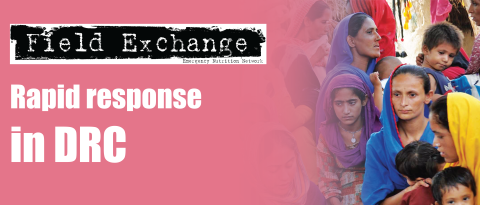Severe acute malnutrition bottleneck analysis tool
A range of surveys and tools is available to gain an understanding of nutrition situations, service delivery performance, bottlenecks and coverage, yet severe acute malnutrition (SAM) information systems are not routinely designed to indicate bottlenecks (obstacles) in effective service delivery coverage in a structured and logical manner.
The approach
The bottleneck-analysis (BNA) approach enables such an analysis and facilitates monitoring of bottlenecks in service delivery. This approach builds on health system conceptualisation of service coverage and is a systematic way to look at the main determinants of effective coverage for interventions in order to identify problem areas and act on them in a timely manner.
BNA involves:
- Identification of bottlenecks to service delivery, root causes and solutions;
- Activity planning for resolving bottlenecks and tracking corrective actions; and
- Monitoring bottlenecks to determine whether actions are effective and support service providers in adjusting actions as needed.
Implementation of the approach to date
To date, UNICEF has facilitated national BNA exercises for SAM treatment services in countries including Kenya, Afghanistan, Pakistan, Tanzania, Somalia, Burkina Faso, Chad and Gambia. In these countries the BNA has provided a structured framework to support effective analysis of bottlenecks in service delivery and an appropriate response plan. The Coverage Monitoring Network also uses the approach to organise quantitative data during coverage assessments and to maintain bottleneck monitoring between assessments.
Further to this implementation, UNICEF, Action Against Hunger, the Coverage Monitoring Network and consultant David Doledec partnered to pilot a series of indicators under the BNA framework. The BNA approach and framework was well received by all pilot partners and there was interest in taking it forward, either at national level or by individual NGO actors, alongside other coverage methodologies. The data visualisation tool was recognised as useful to prompt programme improvement or advocate for change.
The approach is flexible and can be adapted to needs and capacities available; those actors with more resources can add additional investigative exercises to particular determinants as required. The BNA approach may not identify bottlenecks of which implementers are completely unaware, but does indicate the size of the problem. It focuses on the major challenges, their root causes and the actions needed to overcome them. However, there are aspects of the approach that require further testing and strengthening.
After the initial exercise, whether at district or national level, the indicators (if based on routine data) can be inserted into existing monitoring and evaluation systems. They can then be automatically calculated alongside existing SAM treatment indicators, periodically complemented by more comprehensive coverage assessments.
Next steps
UNICEF HQ, with the support of Action Against Hunger and in collaboration with UNICEF Regional Offices, will continue to extend the BNA approach to additional countries in 2017. Specifically, the stakeholders will:
- Disseminate guidance on how to conduct a BNA exercise which can be used by SAM treatment implementers;
- Strengthen staff capacities on the approach (UNICEF, governments and NGOs) with an emphasis on context-specific practical guidance and advice;
- Increase the evidence base on the indicators, ability of the approach to reduce bottlenecks, and the use of the approach as a routine monitoring tool; and
- Provide support to SAM treatment implementers wishing to conduct a BNA exercise.
For more information, see: www.coverage-monitoring.org/wp-content/uploads/2015/12/BAA-12-08-2015.pdf
Footnotes
1 More information on the need for the pilot and its aims can be found at: http://www.coverage-monitoring.org/wp-content/uploads/2015/03/SAM-Bottleneck-Monitoring-Toolkit_Summary.pdf


